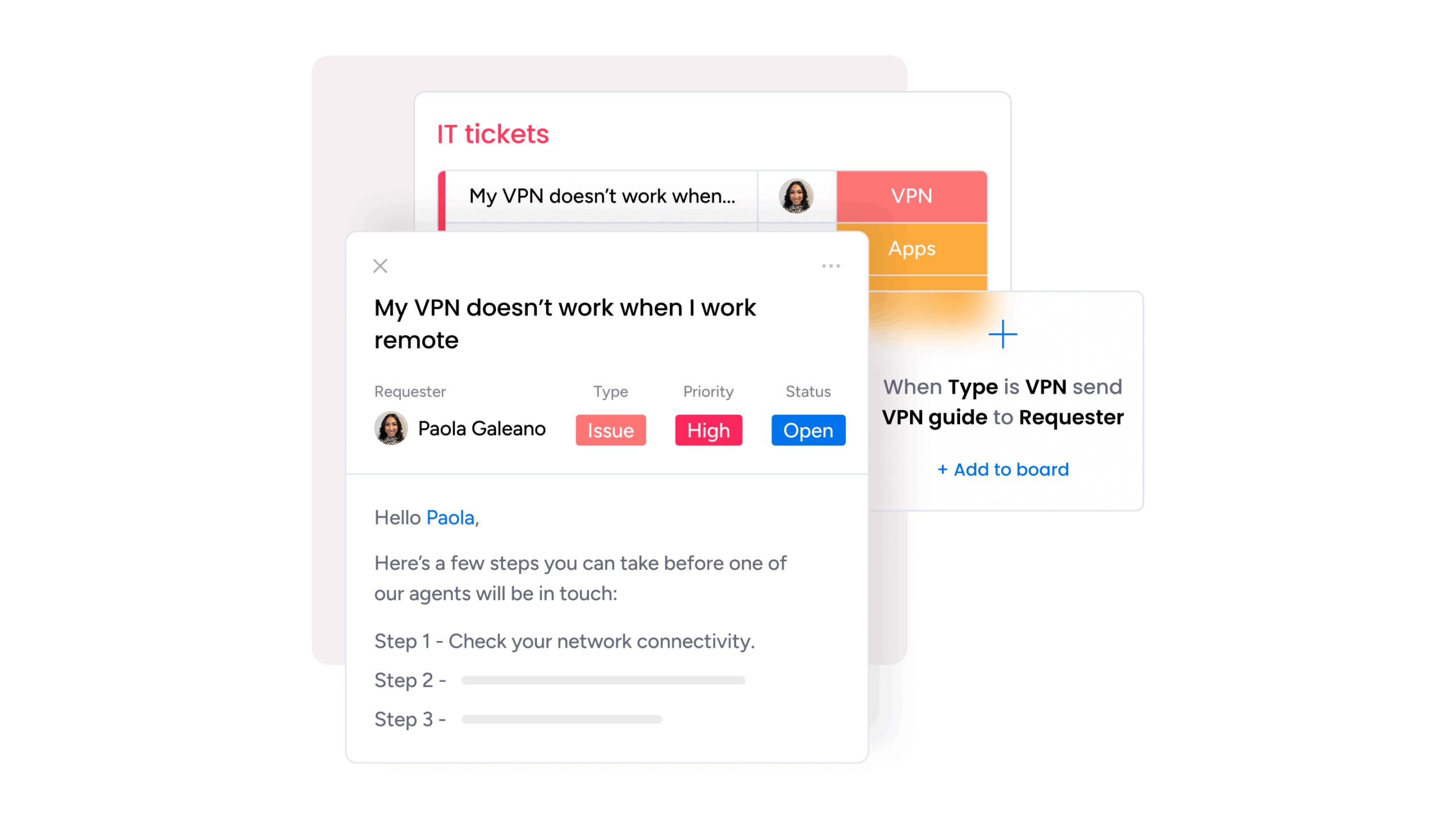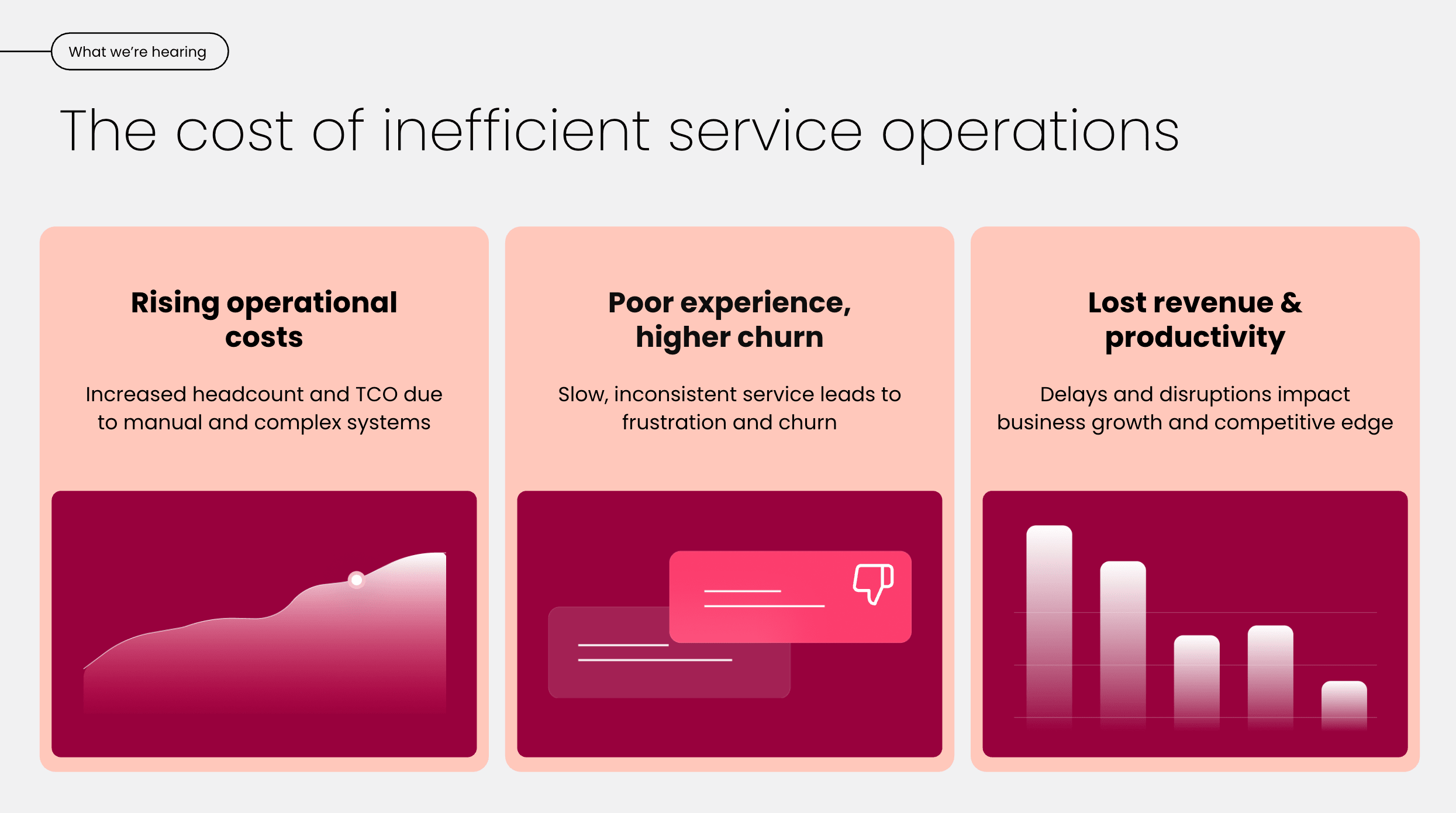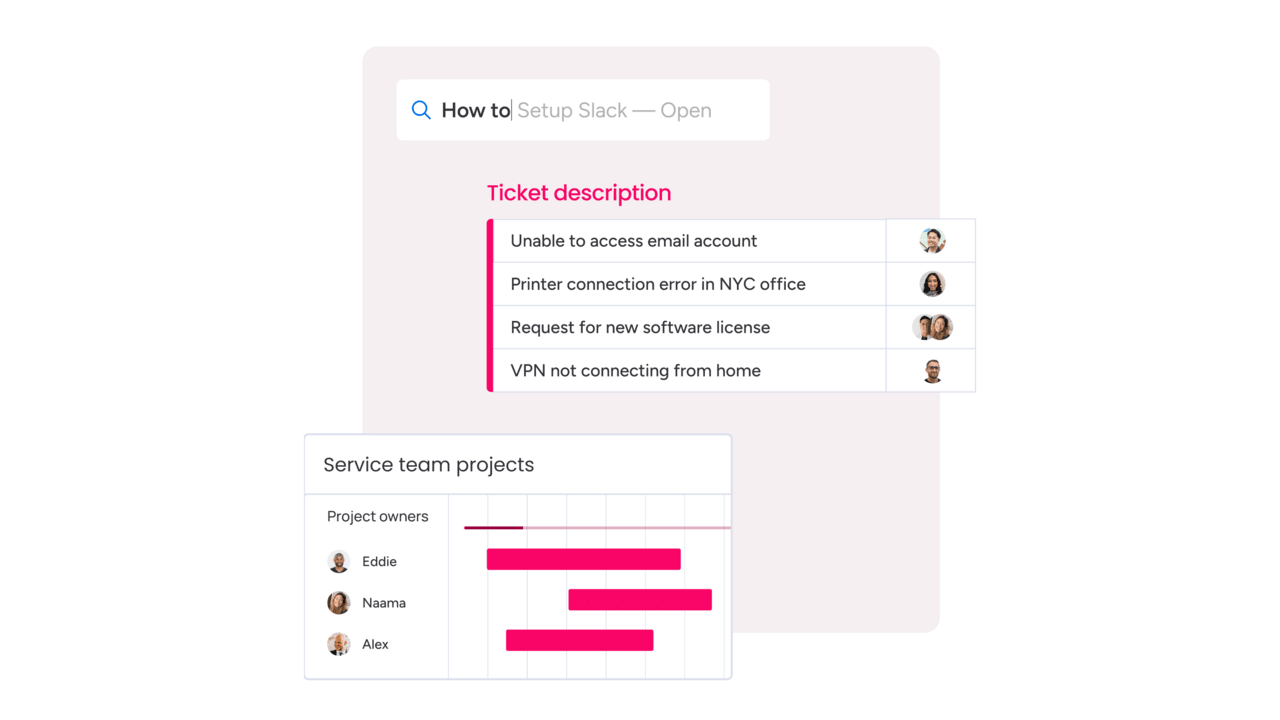Shipping new code should feel like a win, but for many teams, it feels like a gamble. Every deployment carries the risk of downtime, frustrated users, and late-night fixes. Without a clear system, this chaos becomes the norm, slowing down innovation and burning out your best people.
This is where a structured approach to IT release management makes the difference. It transforms the process from a high-stakes event into a predictable, repeatable workflow. By coordinating planning, testing, and deployment, this system ensures changes reach users safely and on schedule, turning risk into reliability.
This handy post details everything needed to build a modern release management practice. Below we’ll outline the seven critical steps of any release, from strategic planning to post-release analysis, and explore best practices for achieving operational excellence.
Let’s get started!
Key takeaways
- Follow the seven critical steps: transform chaotic deployments into predictable, repeatable successes by following the process from strategic planning to post-release analysis.
- Automation and progressive deployment: reduce risk, eliminate human error, and deploy multiple times per day safely by implementing strategies like canary releases and feature flags.
- Track essential metrics: identify bottlenecks in your pipeline and continuously improve release performance using KPIs like deployment frequency, lead time, and Mean Time to Recovery (MTTR).
- Cultivate collaboration: ensure shared responsibility and reliable outcomes by maintaining clear communication channels and treating release problems as vital learning opportunities.
- Integrated system: connect release planning, deployment workflows, and performance metrics with one platform like monday service, leveraging AI-powered insights to automate routine tasks.

What is IT release management?
IT release management is the process of planning, scheduling, and controlling software releases from development through production. It ensures your code changes reach users safely and on schedule, aligning closely with change management best practices.
Release management is the air traffic control for your software deployments, directing code through testing, approval, and deployment stages just as controllers guide planes safely to their gates.
According to data compiled by Hutte.io, companies that adopt DevOps have seen a 68% reduction in deployment failures over the last decade.
7 critical steps in modern release management
Every successful software release follows these fundamental steps. Master them, and you’ll deliver software with confidence every time.
Step 1: strategic release planning
Effective release planning starts by defining the scope, timeline, and stakeholders for every deployment. Answering ‘What are we releasing?’, ‘When will it go live?’, and ‘Who needs to be involved?’ provides the foundational clarity needed to prevent conflicts and align teams from the outset.
- Create a release calendar: that shows all planned deployments.
- Map dependencies: between different teams and systems.
- Set clear deadlines: for code freezes, testing phases, and deployment windows.
Modern solutions like monday service help you visualize these plans in one place, making it easy to spot conflicts and coordinate across teams, aligning well with IT operations management principles.
Step 2: automated build and package management
Your code needs to transform into something deployable. Build management handles this transformation automatically.
Set up continuous integration that builds your software whenever developers commit changes. Store these builds in artifact repositories where they’re versioned and ready for deployment.
Step 3: comprehensive testing and validation
Testing catches problems before your users do. Run automated tests at multiple levels — unit tests for individual components, integration tests for system interactions, and acceptance tests for business requirements.
Create staging environments that mirror production. Test everything there first. If it breaks in staging, you’ve saved yourself from a production incident.
Step 4: environment preparation and staging
Your software needs somewhere to run. Environment management ensures that the place is ready and consistent.
Use infrastructure as code to define your environments. This way, your staging environment matches production exactly. No more ‘works on my machine’ surprises during deployment.
Step 5: orchestrated release execution
Now comes the actual deployment. Choose your strategy based on risk tolerance:
- Blue-green deployments: run two identical environments and switch between them.
- Canary releases: deploy to a small group first, then gradually expand.
- Rolling updates: update servers one at a time to maintain availability
Coordinate with all stakeholders. Everyone should know when the deployment happens, what their role is, and how IT inventory management supports accurate resource tracking.
Step 6: real-time monitoring and observability
Once deployed, real-time monitoring is crucial. Track performance metrics, error rates, and user experience indicators to quickly catch subtle issues.
Establish anomaly alerts for rapid detection. This speed is critical for fast fixes, and advanced platforms like monday service integrate monitoring data into your release workflows, ensuring all data stays connected.
Step 7: post-release analysis and improvement
Post-release analysis is vital: review what went well and what didn’t to maximize learning from every deployment.
Review deployment metrics, gather team feedback, and identify improvement opportunities. Additionally, incorporating asset management insights can help refine your process for next time.

10 best practices for IT release management excellence
Effective IT release management is critical for accelerating product delivery while maintaining system stability and security. The ten best practices outlined below focus on leveraging automation, cultural alignment, and modern tools to transform your release process from a risky bottleneck into a smooth, strategic operation.
1. Embrace end-to-end automation
Automation removes human error from repetitive tasks. Build CI/CD pipelines that handle everything from code compilation to production deployment.
Start with the basics: automated builds and tests. Then add deployment automation, rollback procedures, and notification systems.
2. Implement progressive deployment strategies
Never flip the switch for your entire user base at once. Progressive deployment is essential for minimizing risk by scaling exposure incrementally:
- Feature flags: turn features on or off without deploying new code.
- Percentage rollouts: start with 5% of users, then expand gradually.
- Geographic staging: deploy to one region before going global.
3. Standardize release documentation
Clear documentation prevents confusion during critical moments and directly impacts performance. According to DORA research, teams with high-quality documentation are more than twice as likely to meet or exceed their targets. Create templates for:
- Release notes: explaining what’s changing.
- Deployment guides: with step-by-step instructions.
- Rollback procedures: for quick recovery.
You can streamline this process by using integrated platforms, such as monday service, which provide a dedicated space for documentation within your release workflows.
4. Establish multi-channel communication
Different stakeholders require different information: developers need technical details, while executives demand visibility into business impact. Users want to know how changes affect them, prompting many teams to explore Jira Service Desk alternatives that cater to varied requirements.
Set up communication channels for each audience. Use dashboards for real-time status, automated emails for updates, and dedicated Slack channels for coordination.
5. Leverage feature management platforms
Feature management transforms post-deployment operations by giving you instant control to toggle features, run A/B tests, and roll back problematic functionality without the need to redeploy the entire code base.
This flexibility transforms how you think about releases. Instead of big, risky deployments, you can release continuously with confidence.
6. Ensure environment consistency
Differences between environments cause deployment failures. Maintain consistency through:
- Container images: package your application with its dependencies.
- Configuration management: track and version all environment settings.
- Regular validation: compare environments and fix any drift.
7. Build resilient rollback capabilities
When failures inevitably occur, fast recovery options are crucial for system resilience.
This requires designing deployments to be fully reversible, regularly testing rollback procedures, and implementing automated triggers that initiate the rollback when key metrics exceed predefined thresholds.
8. Integrate security throughout the pipeline
Security can’t be an afterthought. Build it into every stage:
- Scan dependencies: for vulnerabilities during builds.
- Run security tests: in your CI/CD pipeline.
- Validate compliance requirements: before deployment.
Early detection costs less than fixing security issues in production.
9. Monitor with AI-powered insights
AI transforms monitoring from reactive to predictive. It spots patterns humans miss and predicts problems before they occur.
Modern solutions like monday service use AI to analyze your release patterns, identify risks, and suggest optimizations. Let machines handle the routine analysis while you focus on strategic decisions.
10. Foster DevOps collaboration culture
Technology alone cannot fix release management; it requires people working together effectively.
To achieve this, break down silos between development and operations, create shared goals and metrics, and ensure teams celebrate successes and learn from failures without blame.
Release management frameworks: ITIL and DevOps integration
ITIL provides structure and governance. DevOps brings speed and automation. You don’t have to choose — combine them for optimal results.
ITIL’s release and deployment management process ensures proper controls and documentation. It’s especially valuable in regulated industries where compliance matters.
DevOps practices make ITIL processes faster and more efficient. Automate the approval workflows. Replace manual change advisory boards with automated risk assessment.
Here’s how traditional and modern approaches compare:
| Aspect | Traditional ITIL | Modern DevOps | Integrated approach |
|---|---|---|---|
| Approval process | Manual CAB meetings | Automated gates | Risk-based automation with manual oversight |
| Deployment frequency | Monthly/Quarterly | Daily/Multiple per day | Flexible based on risk and business needs |
| Change documentation | Exstensive upfront | Minimal, just-in-time | Automated with human oversight |

5 essential metrics for release management success
Measuring the release process with concrete data is non-negotiable for improving speed and reliability. These five essential metrics provide a holistic view, covering everything from development efficiency to the direct impact on the end user.
1. Deployment frequency and velocity
Deployment frequency measures how often you release new code; higher frequency translates directly to smaller, inherently safer changes.
When this frequency is combined with speed, it defines velocity, enabling high-performing teams to deploy multiple times per day with minimal effort.
2. Lead time for changes
Lead time tracks the duration code takes to reach production after being written, where shorter times mean faster response to market needs.
Use this metric to identify bottlenecks in your pipeline, such as testing delays or slow approvals, and prioritize fixing the biggest delays first.
3. Mean time to recovery
Mean Time to Recovery (MTTR) measures how quickly you can recover when deployments fail. Achieving fast recovery requires good monitoring, clear procedures, and practiced responses; tools for IT asset tracking can help reduce overhead and boost MTTR.
Ultimately, teams with consistently low MTTR can take more calculated risks because they trust their ability to recover quickly.
4. Change success rate
Change success rate tracks the percentage of your deployments that succeed without issues; tracking this over time is crucial for spotting performance trends.
When failures do occur, don’t just measure them, but focus on understanding why they happened, as common causes often include inadequate testing, environment differences, and communication breakdowns.
5. Customer impact metrics
Technical metrics matter, but customer experience matters more. Track:
- Performance impact: page load times, response rates.
- Availability: uptime during and after deployments.
- User satisfaction: support tickets, feedback scores.
Connect these metrics to your release activities. Using platforms like monday service allows you to combine technical and business metrics for complete visibility.
How to overcome common release management challenges
The path to release excellence is often blocked by recurring hurdles involving technical complexity, scale, and compliance. Addressing these common challenges proactively requires standardizing processes and leveraging integrated toolsets designed for enterprise use.
Managing complex dependencies
Modern applications connect to dozens of other systems. When you deploy, these connections can break.
Map your dependencies before deploying. Identify which systems your application calls and which call your application. Plan for graceful degradation when dependencies aren’t available.
Orchestrating multi-cloud releases
Using multiple cloud providers adds complexity, as each has different tools, APIs, and procedures.
- Standardize the process and maintain consistency: by using containers and infrastructure as code across all cloud environments.
- Build platform-agnostic deployment pipelines: to manage unique tools, APIs, and procedures seamlessly across clouds.
Scaling for enterprise growth
What works for small teams breaks at enterprise scale. You need processes that grow with you.
Standardize without stifling innovation. Create core processes everyone follows, but allow teams flexibility in implementation. Use platforms like monday service that scale from small teams to large enterprises.
Maintaining compliance and governance
Regulations don’t disappear because you want to move fast. Build compliance into your automated processes.
Generate audit trails automatically. Include compliance checks in your pipeline. Make governance a natural part of deployment, not a separate gate.

How to build high-performance release management teams
Achieving true release management excellence is less about tools and more about empowering the right people with clear roles and a shared collaborative culture. A successful strategy involves defining core responsibilities, prioritizing essential technical and soft skills, and fostering a collaborative environment.
Core release management roles
Every team needs clear ownership of release activities:
- Release manager: coordinates the overall process and stakeholder communication.
- Deployment engineer: handles technical execution and automation.
- DevOps engineer: bridges development and operations concerns.
Small teams might combine these roles. Large teams might have multiple people in each. What matters is that someone owns each responsibility.
Essential skills and competencies
Technical skills get the job done. Look for expertise in:
- Automation: scripting and CI/CD platforms.
- Cloud native: platforms and containerization.
- Monitoring: metrics and observability tools.
Soft skills make the difference between good and great teams. Communication, problem-solving, and stakeholder management often matter more than technical prowess.
Creating a collaborative release culture
Culture beats process every time. Build a culture where:
- Teams share responsibility: for release success.
- Problems are learning opportunities: not blame sessions.
- Continuous improvement: is everyone’s job.
Regular retrospectives help teams learn and improve. Cross-training ensures knowledge doesn’t live in just one person’s head.
Transform your IT release management with monday service
Bringing together everything you need for successful release management, monday service is built for teams who want structure without rigidity and automation without complexity.
The platform excels at connecting the dots between planning, execution, and improvement. Your release plans, deployment workflows, and performance metrics live in one place. AI-powered features handle routine tasks while you focus on strategic decisions.
Teams using monday service alos report faster deployments, fewer failures, and less stress during releases. The platform adapts to your processes rather than forcing you into a rigid framework.
Whether you’re managing simple application updates or complex multi-system deployments, monday service provides the visibility and control you need.
Frequently asked questions
How long does implementing IT release management take?
The time it takes to implement IT release management is typically three to six months for basic processes, with immediate improvements possible by starting with automated deployment pipelines and standardized documentation.
What is the difference between release management and deployment management?
Release management encompasses the entire process from planning to post-release analysis, while deployment management focuses specifically on the technical execution of moving software to production environments.
Do small development teams need formal release management processes?
Small teams benefit from lightweight release management practices like automated testing, deployment checklists, and rollback procedures, even without the full governance structures that larger organizations require.
How do you manage software releases across microservices architectures?
Managing microservices releases requires service mesh coordination, API versioning strategies, and distributed monitoring to ensure individual service deployments maintain overall system functionality.
Which certifications help advance a release management career?
ITIL Foundation, DevOps certifications from major cloud providers (AWS, Azure, Google Cloud), and project management certifications like PMP provide valuable credentials for release management professionals.
What release management software do enterprise organizations use?
Enterprise organizations typically use integrated platforms that combine release orchestration, change management, and service management capabilities, often choosing solutions that connect with their existing development and operations platforms.
 Get started
Get started 

